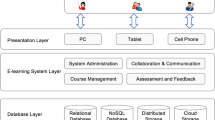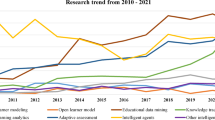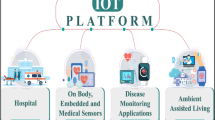Abstract
In response to the demand for high-quality electronic information talents in the mobile network industry, in the situation of artificial intelligence (AI) to promote technological innovation, this paper conducts an overall design in the target system, curriculum system, teaching platform, teaching mode and teaching case. The practice education mode of teaching practice, engineering practice, innovation practice, and enterprise practice, which aims to improve students’ ability to solve complex engineering problems, is constructed. The mode breaks geographical boundaries between schools and enterprises to build the through-through experimental teaching course system based on artificial intelligence and edge computing and design a medical image intelligent analysis system project case based on Mobile Edge Computing (MEC), which improves students’ practical ability, engineering design ability, scientific research innovation ability, enterprise practice ability and mobile network application capabilities. At the same time, the hardware portability of the edge computing platform provides good conditions for long-distance education and the mobile network. This method is a beneficial attempt to cultivate high-level, diversified, and creative electronic information talents.










Similar content being viewed by others
References
Mshvidobadze T (2012) Evolution mobile wireless communication and LTE networks. 2012 6th international conference on application of information and communication technologies (AICT). IEEE, 1-7
Kandampully J (2003) B2B relationships and networks in the internet age. Manag Decis 41(5):443–451
Zou P, Wang C, Liu Z (2010) A cloud based SIM DRM scheme for the mobile internet. Proceedings of the 17th ACM conference on Computer and communications security, pp:759–761
RM S P, Bhattacharya S, Maddikunta P K R (2020) Load balancing of energy cloud using wind driven and firefly algorithms in internet of everything. Journal of Parallel and Distributed Computing 142:16–26
Liu S, Guo C, Al-Turjman F (2020) Reliability of response region: a novel mechanism in visual tracking by edge computing for IIoT environments. Mech Syst Signal Process 138:106537.1–106537.15
Lin Y, Tu Y, Dou Z (2020) An improved neural network pruning Technology for Automatic Modulation Classification in edge devices. IEEE Trans Veh Technol 69(5):5703–5706
Skouby K E, Lynggaard P (2014) Smart home and smart city solutions enabled by 5G, IoT, AAI and CoT services. 2014 international conference on contemporary computing and informatics (IC3I). IEEE, 874-878
Afzal MK, Zikria YB, Mumtaz S (2018) Unlocking 5G spectrum potential for intelligent IoT: opportunities, challenges, and solutions. IEEE Commun Mag 56(10):92–93
Zhang C, Sun Y, Zhang X (2020) Research on Experimental Teaching Reform of Electronic Technology Course. International Conference on Innovative Mobile and Internet Services in Ubiquitous Computing. pp:324–333
Sandgren DL (1956) Does practice teaching change attitudes toward teaching? J Educ Res 49(9):673–680
Lin Y, Wang S, Wu Q (2019) Key technologies and solutions of remote distributed virtual laboratory for E-learning and E-education. Mobile Networks and Applications 24(1):18–24
Gong W, Tong L, Huang W (2018) The optimization of intelligent long-distance multimedia sports teaching system for IOT. Cogn Syst Res 52:678–684
Kaliannan M, Chandran SD (2012) Empowering students through outcome-based education (OBE). Res Educ 87(1):50–63
Gu PH, Hu WL, Lin P (2014) OBE engineering education model in Shantou University. Research in Higher Education of Engineering 1:27–37
Kathail V, Hwang J, Sun W (2016) SDSoC: a higher-level programming environment for Zynq SoC and Ultrascale+ MPSoC. Proceedings of the 2016 ACM/SIGDA international symposium on field-programmable gate arrays 2016: 4-4
Rao A R, Clarke D, Bhdiyadra M (2018) Development of an embedded system course to teach the internet-of-things. 2018 IEEE integrated STEM education conference (ISEC). IEEE, 154-160
Liu S, Bai W, Liu G (2018) Parallel fractal compression method for big video data. Complexity 2016976
Jain AK, Pham KD, Cui J (2014) Virtualized execution and management of hardware tasks on a hybrid ARM-FPGA platform. Journal of Signal Processing Systems 77(1–2):61–76
Liu S, Wang S, Liu X (2020) Fuzzy detection aided real-time and robust visual tracking under complex environments. IEEE transactions on fuzzy systems, pp(99):1-1
Rehman B, Ong WH, Tan ACH (2020) Face detection and tracking using hybrid margin-based ROI techniques. Vis Comput 36(3):633–647
Mliki H, Hammami M (2018) Face analysis in video: face detection and tracking with pose estimation. International Journal of Biometrics 10(2):121
Ahlawat S, Choudhary A, Nayyar A (2020) Improved handwritten digit recognition using convolutional neural networks (CNN). Sensors 20(12):334
Lin Y, Wang M, Zhou X, Ding G, Mao S (2020) Dynamic Spectrum interaction of UAV flight formation communication with priority: a deep reinforcement learning approach. IEEE Transactions on Cognitive Communications and Networking 6(3):892–903
He K, Zhang X, Ren S (2016) Deep residual learning for image recognition. Computer Vision & Pattern Recognition, pp:770–778
Acknowledgments
This work is supported by the National Natural Science Foundation of China (62001137); the National Key Research and Development Program of China under Grant 2018AAA0102702; the Natural Science Foundation of Heilongjiang Province (JJ2019LH2398); the Fundamental Research Funds for the Central Universities (3072020CFT0801). All of the authors declare that there is no conflict of interests regarding the publication of this article.
We would like to thank the reviewers for their useful discussions and suggestions.
Author information
Authors and Affiliations
Corresponding author
Additional information
Publisher’s note
Springer Nature remains neutral with regard to jurisdictional claims in published maps and institutional affiliations.
Rights and permissions
About this article
Cite this article
Hou, C., Hua, L., Lin, Y. et al. Application and Exploration of Artificial Intelligence and Edge Computing in Long-Distance Education on Mobile Network. Mobile Netw Appl 26, 2164–2175 (2021). https://doi.org/10.1007/s11036-021-01773-x
Accepted:
Published:
Issue Date:
DOI: https://doi.org/10.1007/s11036-021-01773-x




